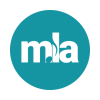CC:DA ALA Annual Report 2023, July 14 & 21, 2023
Submitted by Keith Knop, CMC Content Standards Subcommittee Chair and liaison to CC:DA.
The annual summer meeting of the ALA Core Committee on Cataloging: Description and Access (CC:DA) took place virtually on July 14 and 21, 2023. The full meeting agenda, including links to reports from the PCC, NARDAC, Library of Congress, and MARC Advisory Committee representatives, is available here. Both sessions were recorded, and links to the recordings were posted to the publicly available CC:DA discussion space in ALA Connect.Of primary interest to music cataloging were two MLA discussion papers related to RDA, both of which may be accessed via link in the public agenda cited above.
The first paper addressed the apparent lack of support in the in the RDA File Type vocabulary for files containing notated music content as well as the lack of clarity in the RDA file type element as to whether the type of content encoded or the technical method of encoding content was the primary determining factor in describing file types, especially as what is colloquially referred to as “file type” (e.g., PDF, MP3, .docx, etc.) is covered by the RDA encoding format element. This last point occasioned a certain amount of RDA archaeology in an attempt to determine where the file type and encoding format elements came from as they appear to be refinements of a much more general parent attribute in both FRBR (for original RDA) and LRM (for official RDA).
In the end, the general consensus seemed to be that file type is best viewed as a kind of superset or grouping mechanism for the colloquial “file types” described by the encoding format element, and that a separate vocabulary term for notated music files was probably warranted for files where notated music content is encoded in such a way as to be recognized as music by software that interprets the file. This would include files produced by notation software such as Sibelius or Finale or encoded in a schema such as MusicXML or MEI. By contrast, a score rendered as PDF would probably be best described as an image file (and possibly also a text file, if it included significant searchable text). The MLA Content Standards Subcommittee will refine vocabulary suggestions based on this discussion and reevaluate existing Best Practices and related documentation where needed.
The second paper addressed an issue first raised by the MLA Encoding Standards Subcommittee in relation to MARC field 383, which as written applies to musical works only, not musical expressions. This paper outlined a case for creating Expression elements for opus, serial, and thematic index numbers for expressions of musical works to parallel the existing work elements. Prior to the CC:DA meeting, however, CSS received feedback that the RDA Steering Committee was unlikely to approve any new subtypes of identifier elements, and that these use cases would best be covered by the general identifier for expression element.
In light of that, discussion wandered somewhat freely among related topics, with the likely outcome being that this RDA lacuna will be addressed by some combination of MLA Best Practices, MLA content in the Community Resources section of the RDA Toolkit, and/or other MLA documentation. Bob Maxwell, NARDAC representative to the RSC, suggested the discussion paper should still be submitted to the RSC even if the suggested new elements were unlikely to be approved, prompting another suggestion to consider proposing the reestablishment of an international music working group under the RSC. A similar music working group that previously existed under the old Joint Steering Committee for RDA, and such a group could make clear to the RSC where concerns about music description are not limited to a single constituency. Former RSC Chair Kathy Glennan noted that was something she had wished to tackle during her tenure, but did not have time to do so.
